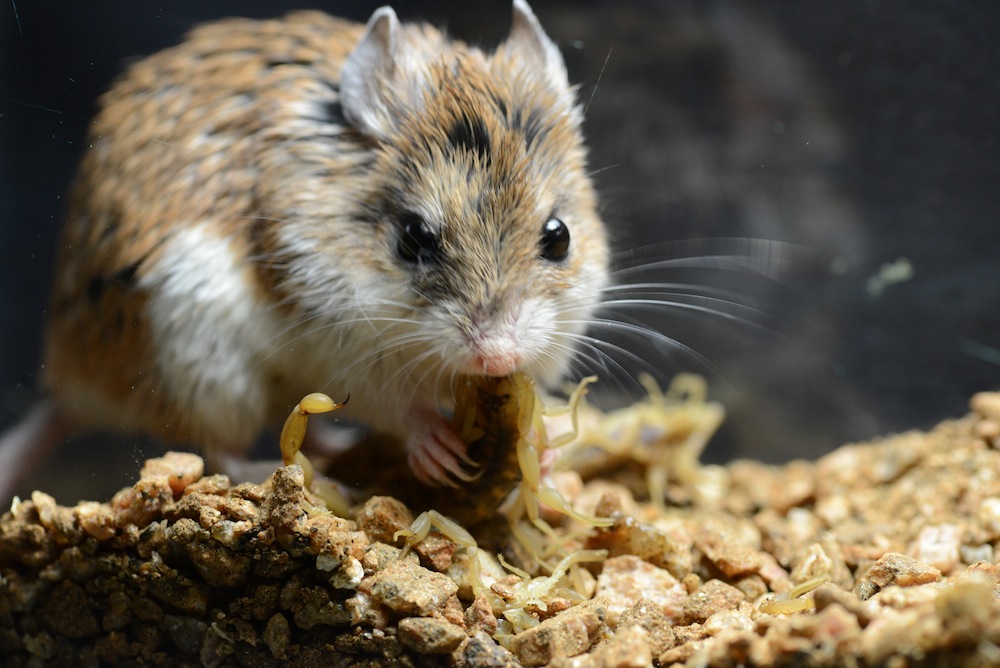Slo-Mo Whoa: Mouse Tears Off Scorpion's Head in New Video

A jaw-dropping new video shows a fuzzy little mouse as a fearsome fighter, attacking and killing a venomous scorpion in slow motion.
The new mouse-scorpion video, released on YouTube by Michigan State University, shows how the hamster-sized southern grasshopper mouse (Onychomys torridus) has evolved to withstand the painful stings of the Arizona bark scorpion (Centruroides sculpturatus). According to research conducted by Michigan State University zoologist Ashlee Rowe, the mice actually transform the venom into a painkiller.
"We don't want to try to sound too cute or anything, but it is sort of like an evolutionary martial art, where the grasshopper mice are turning the tables. They're using their opponents' strength against them," Rowe said in October.
It works like this: Typically, the scorpion venom would activate nociceptors, sensory cells that relay pain signals to the brain. The cells relay these signals by opening and closing channels in their cell membranes, particularly the sodium/potassium channel. [Slo-Mo Video: Mouse Rips Off Scorpion's Head]
Grasshopper mice have evolved a workaround, though. In their cells, the scorpion toxin actually deactivates the sodium/potassium channels responsible for carrying the pain messsages to the brain. In that way, the mice don't feel the toxin's pain.
"It's kind of like cutting a wire," Rowe told Live Science in October. The mice are also resistant to the other toxins in the venom, so suffer no ill effects from the stings.
This finding could be important, because if scientists can figure out a way to artificially shut down that same channel in humans, they might be able to develop a painkiller without side effects such as drowsiness or addiction.
Sign up for the Live Science daily newsletter now
Get the world’s most fascinating discoveries delivered straight to your inbox.
The new video, however, shows the amazing adaption during natural encounters. A bark scorpion and a grasshopper mouse face off in a tank set up to look like the animals' desert habitat. When the mouse attacks, the scorpion attempts to defend itself with multiple stings, which the predator brushes off with barely a flinch.
Follow Stephanie Pappas on Twitter and Google+. Follow us @livescience, Facebook & Google+. Original article on Live Science.

Stephanie Pappas is a contributing writer for Live Science, covering topics ranging from geoscience to archaeology to the human brain and behavior. She was previously a senior writer for Live Science but is now a freelancer based in Denver, Colorado, and regularly contributes to Scientific American and The Monitor, the monthly magazine of the American Psychological Association. Stephanie received a bachelor's degree in psychology from the University of South Carolina and a graduate certificate in science communication from the University of California, Santa Cruz.










